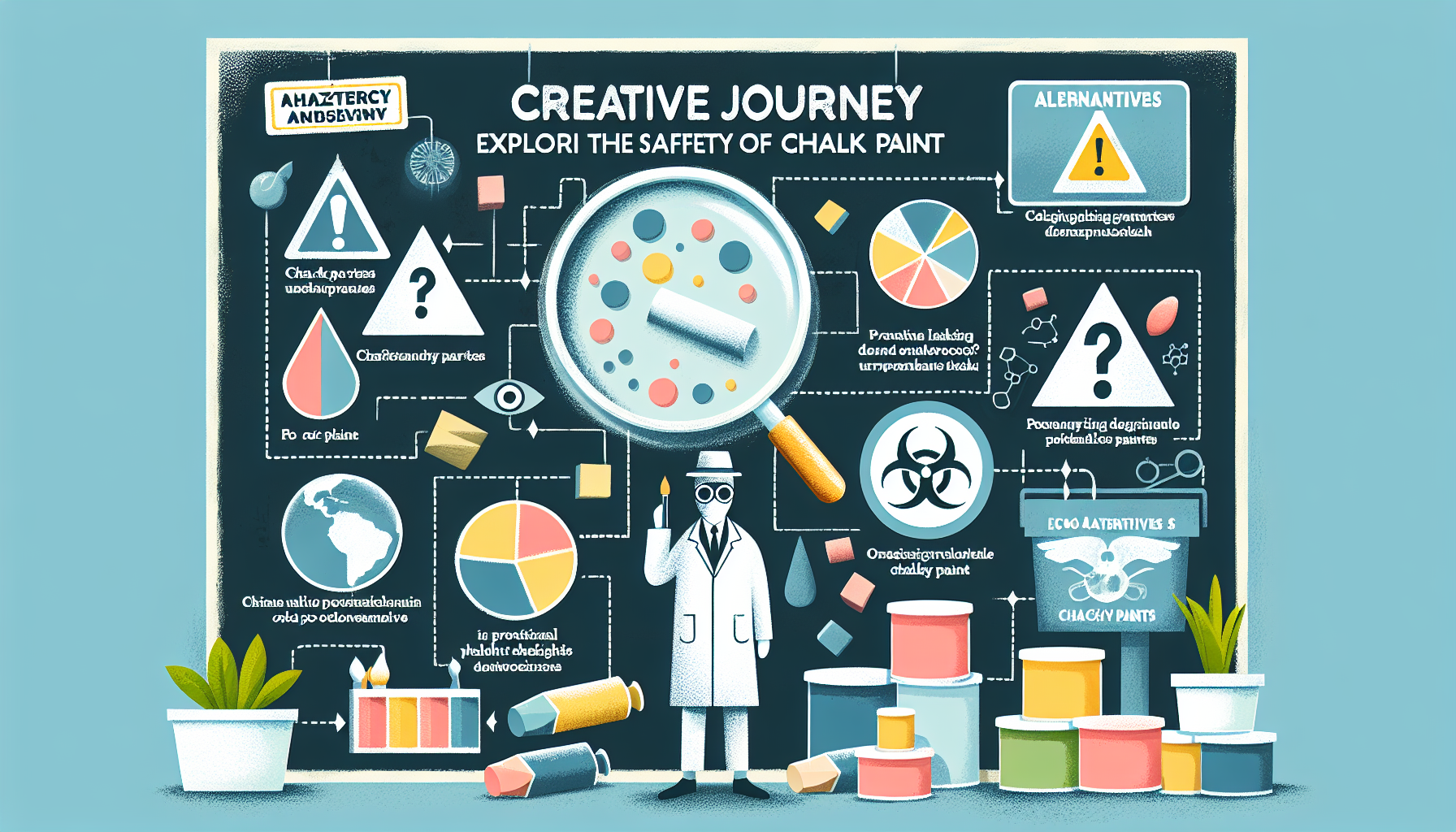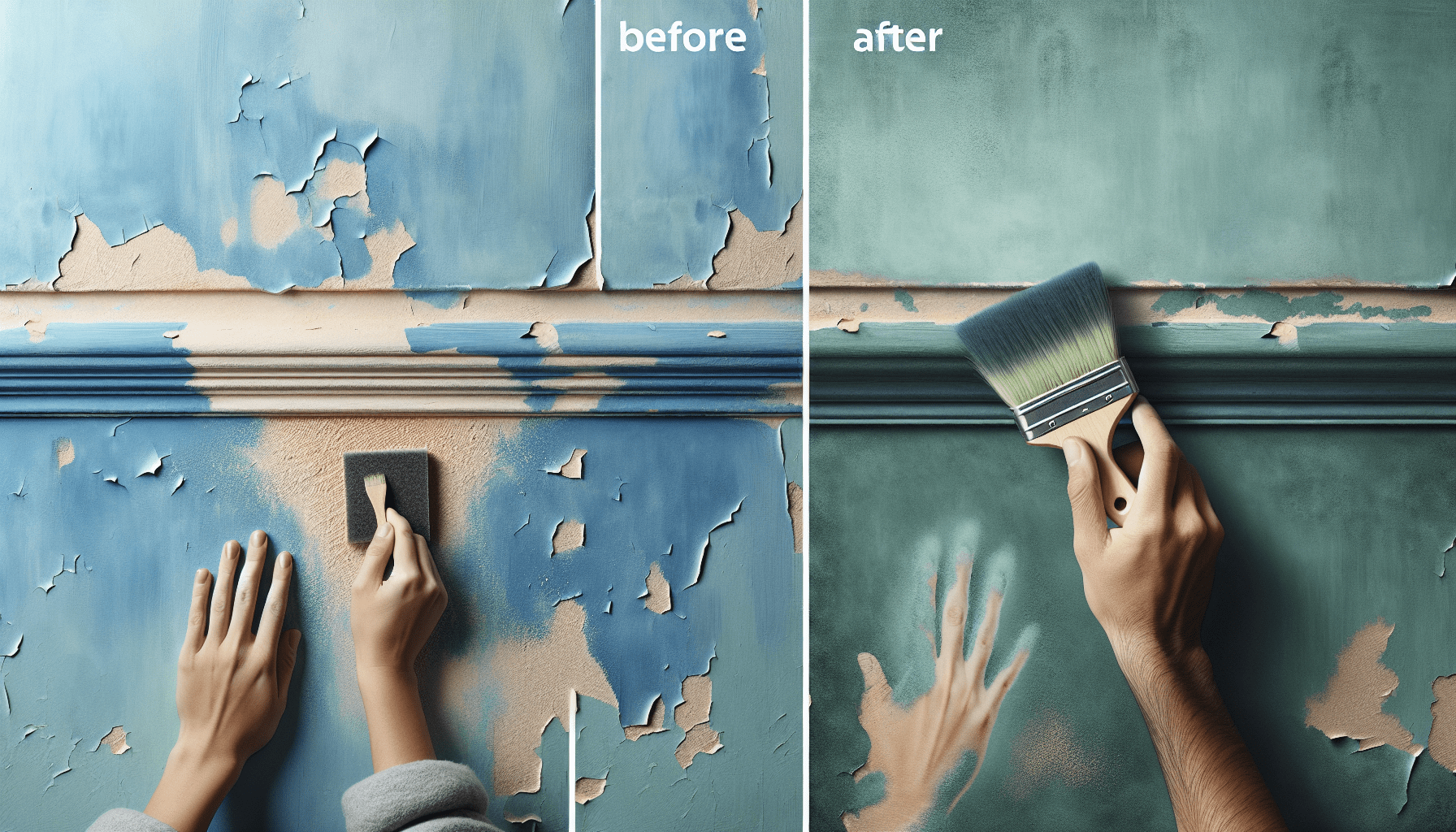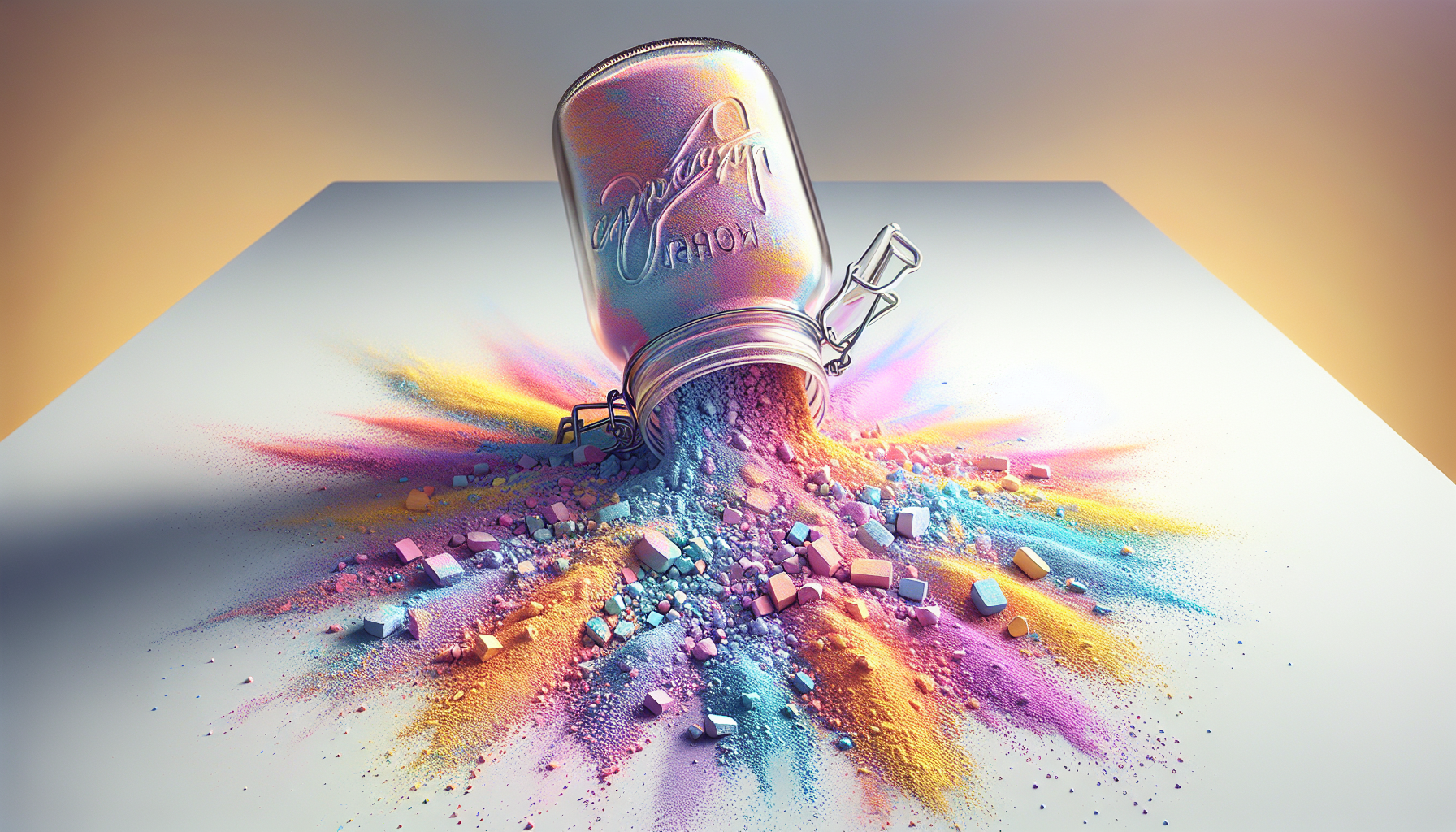Chalk paint has gained significant popularity in recent years, becoming a go-to choice for many DIY enthusiasts and professionals alike. But amidst its rise to fame, a question lingers in the minds of those considering this versatile paint option: is chalk paint toxic? In this article, we will explore the possible risks associated with using chalk paint and provide you with an informed perspective to help you make the best decisions when it comes to your painting projects.
What is Chalk Paint
Chalk paint is a type of paint that has gained popularity for its unique finish and versatility in various types of projects. It is known for its matte, chalky appearance, which can create a vintage or rustic look on furniture, walls, and other surfaces. Chalk paint is often chosen for its ease of use and ability to adhere to a wide range of materials without the need for extensive preparation.
Composition of Chalk Paint
Chalk paint is typically composed of several key ingredients that contribute to its distinctive qualities. These ingredients include calcium carbonate, pigments and dyes, solvents, binders, and additives. Each component plays a crucial role in the overall performance and characteristics of the paint.
Common Uses of Chalk Paint
Chalk paint has become a popular choice for DIY enthusiasts and professionals alike due to its versatility. Common uses of chalk paint include refurbishing furniture, transforming outdated cabinetry, revamping walls, and creating unique decorative accents. Its ability to adhere well to various surfaces, including wood, metal, and even glass, makes it an ideal option for a wide range of projects.
Understanding Toxicity
Definition of Toxicity
Toxicity refers to the potential harm that a substance can cause to human health or the environment. It is important to understand and assess the toxicity of any product, including chalk paint, to ensure safe usage and minimize potential risks.
Determining Factors of Toxicity
The toxicity of a substance is influenced by various factors, including the specific ingredients, concentration levels, exposure duration, and individual susceptibility. It is crucial to consider these factors when evaluating the potential health risks associated with chalk paint.
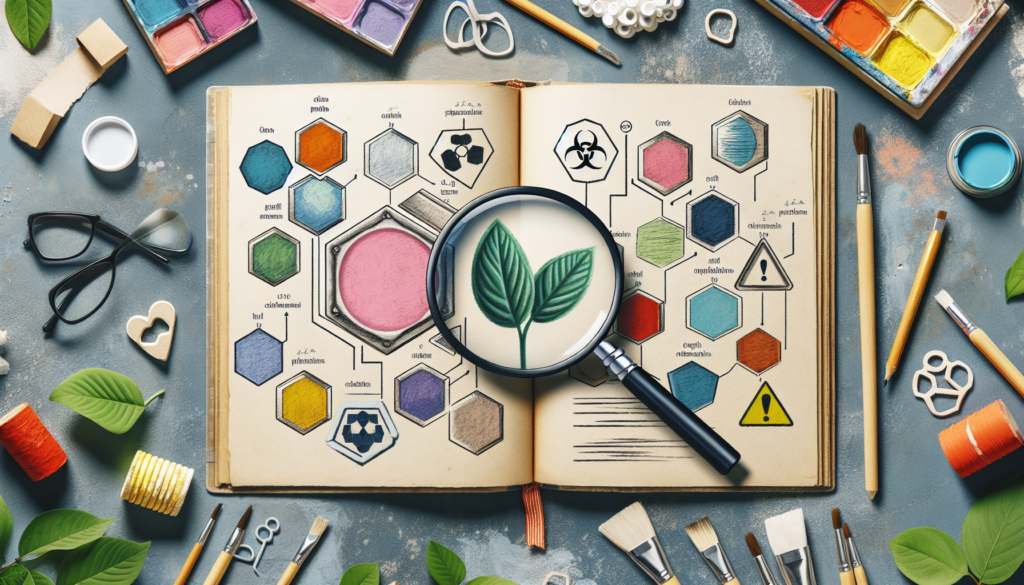
Ingredients in Chalk Paint
Calcium Carbonate
Calcium carbonate is a primary ingredient in chalk paint, responsible for its characteristic matte appearance and ease of distressing. It acts as a filler and provides the paint with the desired texture and opacity. While calcium carbonate itself is not highly toxic, it is important to consider other components in the paint that may contribute to potential health risks.
Pigments and Dyes
Pigments and dyes are responsible for giving chalk paint its wide range of colors. These additives contain various chemical compounds that may vary in terms of toxicity. It is essential to check the specific pigments and dyes used in the paint to ensure they meet safety standards and regulations.
Solvents
Solvents are used in chalk paint to dissolve the binders and deliver the paint onto the surface. The type and concentration of solvents can vary between different brands and formulas of chalk paint. Some solvents may have the potential to cause health issues, particularly when inhaled or absorbed through the skin.
Binders
Binders in chalk paint help to create a durable film and bond the pigments to the surface. Common binders used in chalk paint may include acrylic resins, latex, or other polymers. These binders can contribute to the paint’s performance but may also have implications for potential health risks.
Additives
Various additives are often included in chalk paint to enhance its performance, such as drying agents, anti-settling agents, and preservatives. While these additives can improve the paint’s quality, it is important to consider their potential toxicity and any associated health risks.
Potential Health Risks
Inhalation Risks
When working with chalk paint, inhalation of dust or particles generated during sanding or application may pose a risk. Some ingredients in chalk paint, such as pigments or solvents, can release volatile organic compounds (VOCs) into the air, which may lead to respiratory irritation or other health issues. It is important to work in a well-ventilated area and wear appropriate respiratory protection when necessary.
Skin and Eye Contact Risks
Direct skin contact with certain ingredients in chalk paint may cause skin irritation or allergic reactions in sensitive individuals. Similarly, contact with the eyes can result in irritation or injury. It is important to wear protective gloves, goggles, and clothing that covers exposed skin when working with chalk paint to minimize these risks.
Ingestion Risks
Ingesting chalk paint can pose significant health risks, especially if the paint contains toxic ingredients. Accidental ingestion can occur, particularly in households with young children or pets. It is crucial to keep chalk paint containers tightly sealed and out of reach of children, and to seek medical attention immediately if ingestion occurs.
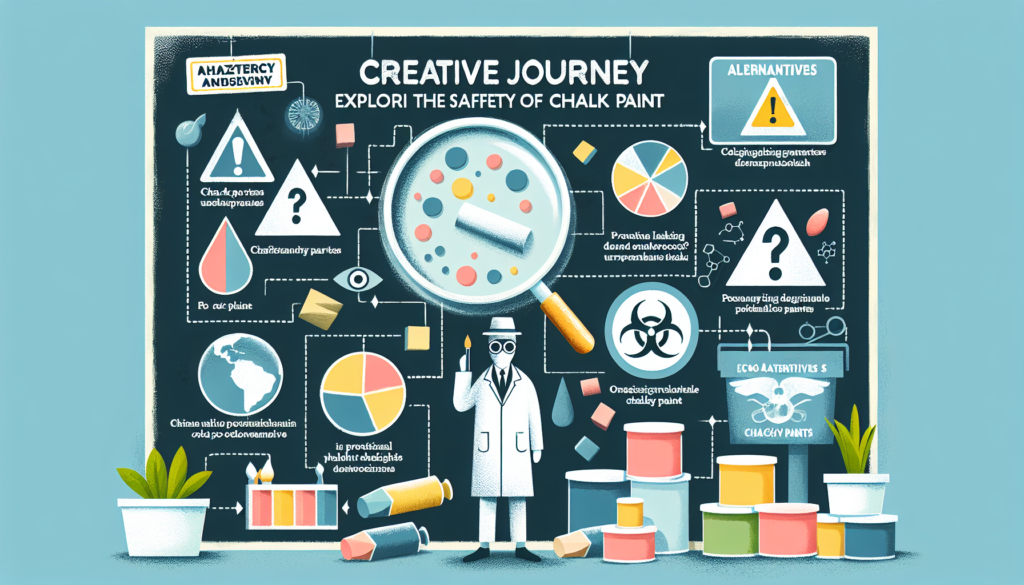
Regulations and Certifications
Impact of Regulations on Chalk Paint
Government regulations and industry standards play a vital role in ensuring the safety and quality of chalk paint. These regulations often impose restrictions on certain toxic ingredients, as well as dictate labeling requirements and safety standards for manufacturers to follow. Compliance with these regulations helps to minimize potential health risks associated with chalk paint.
VOC (Volatile Organic Compound) Limits
VOC limits are set by regulatory bodies to control air pollution and reduce potential harm to human health and the environment. Chalk paint manufacturers may need to adhere to specific VOC limits to ensure their products meet regulatory requirements. Choosing paints that comply with these limits can help minimize the emission of harmful compounds into the air.
Certifications for Non-Toxic Paint
Certifications such as low VOC or non-toxic labels can provide consumers with assurance that a particular chalk paint brand meets specific safety standards. These certifications are often awarded by independent organizations that rigorously test and evaluate the paint’s ingredients and potential health risks. When evaluating chalk paint brands, it is recommended to look for reputable certifications to ensure safer usage.
Evaluating Chalk Paint Brands
Researching Brand Information
When selecting a chalk paint brand, it is important to research and gather information about the manufacturer’s reputation, history, and commitment to safety. Reputable brands often prioritize product quality and safety, employing strict manufacturing processes and sourcing high-quality ingredients.
Reviewing Safety Data Sheets
Safety Data Sheets (SDS) provide detailed information on the composition, potential hazards, safe handling procedures, and emergency measures for a particular product. Reviewing the SDS of different chalk paint brands can help assess the potential health risks associated with each product and make informed decisions.
Customer Reviews and Testimonials
Taking into account customer reviews and testimonials can provide valuable insights into the experiences of others who have used a specific chalk paint brand. Pay attention to comments regarding safety, ease of use, and overall satisfaction to help gauge the quality and safety of the product.
Safe Usage Practices
Work in a Well-Ventilated Area
Ensure you work in a well-ventilated area when using chalk paint. This will help prevent the build-up of potentially harmful fumes and improve the overall air quality. Open windows, use fans, or work outdoors if possible to enhance air circulation and minimize exposure to harmful chemicals.
Wear Protective Gear
Wearing appropriate protective gear is vital when working with chalk paint. This includes gloves, goggles, and a suitable face mask respirator. Protective gear helps minimize direct contact with the skin and eyes, as well as reduce the risk of inhaling harmful dust or fumes.
Avoid Ingestion and Skin Contact
Take precautions to prevent accidental ingestion and skin contact when using chalk paint. Store paint containers securely and out of reach of children and pets. Clean up any spills promptly and wash hands thoroughly after using chalk paint to minimize the risk of accidental ingestion or skin irritation.
Proper Disposal
When finished with chalk paint, proper disposal is essential to minimize environmental impact and adhere to local regulations. Follow local guidelines for disposing of paint containers, unused paint, and cleaning materials. Some areas may require specific disposal methods to prevent contamination of soil or water sources.
Alternatives to Chalk Paint
Milk Paint
Milk paint is another popular option for achieving a vintage or distressed look on furniture. It is a non-toxic paint made from milk protein (casein), lime, pigments, and water. Milk paint is known for its eco-friendly composition and natural aging characteristics, making it a safe and environmentally conscious alternative to chalk paint.
Mineral Paint
Mineral paint, also known as mineral fusion paint, is a water-based paint that contains minerals such as clay, chalk, and pigments. This paint offers a smooth, matte finish similar to chalk paint and is often chosen for its durability and ease of use. Mineral paint is generally low in VOCs and offers a wide range of colors, making it a viable alternative to chalk paint.
Latex Paint
Latex paint, commonly used for walls and other surfaces, can also serve as an alternative to chalk paint. It comes in various finishes, from matte to high gloss, and offers excellent adhesion and durability. It is important to choose low or zero VOC latex paint to ensure a safer and environmentally friendly option.
Children and Chalk Paint
Risks for Children
Children may be more susceptible to potential health risks associated with chalk paint due to their smaller size and developing immune systems. Inhalation of fumes or particles, ingestion of paint, or contact with allergenic substances in the paint may pose greater risks to children. Proper precautions should be taken to minimize these risks.
Precautions for Children’s Use
When involving children in chalk paint projects, it is important to closely supervise and guide them. Ensure they work in well-ventilated areas and wear appropriate protective gear, such as gloves and goggles. Minimize the risk of ingestion by storing paint containers securely and providing clear instructions on safe usage.
Environmental Impact
VOC Emissions
Volatile Organic Compounds (VOCs) released by paint can contribute to air pollution and have adverse effects on the environment. Opting for low VOC chalk paint brands helps reduce VOC emissions and minimize environmental impact. Choosing paints with eco-friendly certifications or labels can further support sustainable practices.
Disposal Considerations
Proper disposal of chalk paint and related materials is crucial to prevent environmental contamination. Follow local guidelines for disposal, which may include recycling paint containers, using paint take-back programs, or disposing of unused paint at designated facilities. By adhering to proper disposal practices, the potential environmental impact of chalk paint can be minimized.
In conclusion, chalk paint can be a valuable tool for various projects, offering unique finishes and ease of use. However, it is important to understand the potential health risks associated with its ingredients and take appropriate precautions to ensure safe usage. By choosing reputable brands, evaluating safety data, and following safe usage practices, you can minimize potential risks and enjoy the benefits of chalk paint.
